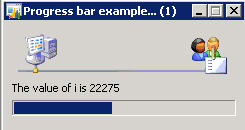Error:
When trying to create a new record(s) in any
table system shows following error
eg. At
the time of creating new Sales Order and this error may appear.
Possible Reason(s):
TTS level '1' usually leaves
your Ax session in an unusable state that you can't close properly.
Check all code for form or class from where
this error comes and count the ttsbegin and ttscommit there must be same like
if u write 2 ttsbegin u must have to write 2 ttscommit.
Solution:
To resolve this error
this TTS level should be ZERO, Run this job to get rid of that error, this job
will find the tts level where its greater than zero and make it zero by calling
TTSABORT.
static void TheAxaptaResetTTS(Args _args)
{
while (appl.ttsLevel() > 0)
{
info(strfmt("Level %1
aborted",appl.ttsLevel()));
ttsAbort;
}
}
Other Info:
ttsBegin: marks the beginning of a transaction. This ensures data
integrity, and guarantees that all updates performed until the transaction ends
(by ttsCommit or ttsAbort) are consistent (all or none).
ttsCommit: marks the successful end of a transaction. This
ends and commits a transaction. MorphX guarantees that a committed transaction
will be performed according to intentions.
-Harry






